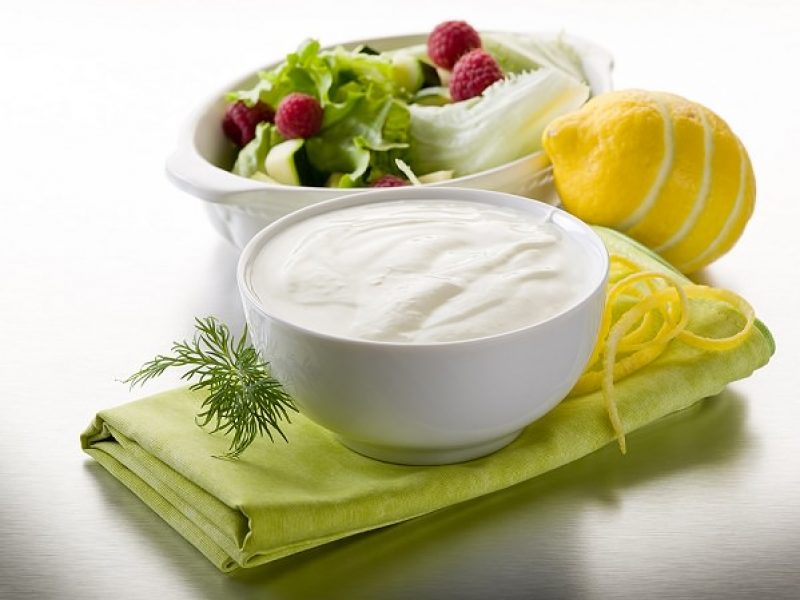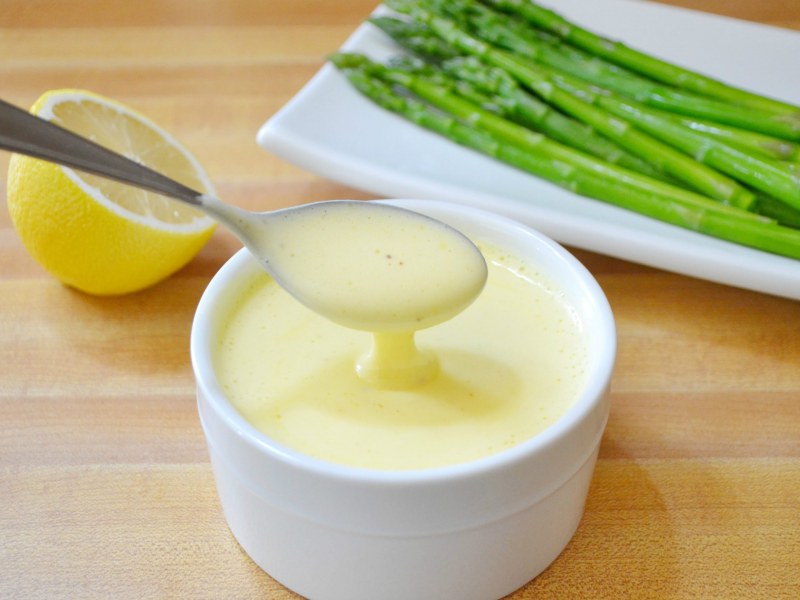A Sumptuous Guide to Sweet Salad Dressing Varieties and Recipes
Introduction:
Salad dressing is an essential component that brings life and flavor to a healthy bowl of greens. While many salad dressings lean towards savory and tangy flavors, sweet salad dressings have gained significant popularity in recent times. These sweet dressings add a touch of indulgence and balance to your salads, making them a delightful treat for your taste buds. In this article, we delve into the world of sweet salad dressings, exploring various types and providing tempting recipes to elevate your salad game.
I. Exploring Sweet Salad Dressings
1. Honey Mustard Dressing:
– Combining the boldness of mustard with the natural sweetness of honey, this dressing offers a harmonious balance of flavors. It pairs well with crispy greens, grilled chicken, and fruits such as apples and pears.
2. Creamy Balsamic Dressing:
– Elevating the classic balsamic dressing by adding a touch of sweetness, this creamy version is a crowd-pleaser. It complements salad ingredients like tomatoes, goat cheese, and candied nuts.
3. Raspberry Vinaigrette:
– Infused with the vibrant and tangy essence of raspberries, this dressing brings a delightful burst of sweetness to your salad. It blends perfectly with spinach, goat cheese, and sliced almonds.
4. Asian Sesame Dressing:
– For those craving an Asian-inspired sweetness, this dressing combines the nutty flavor of sesame oil with honey and soy sauce. It pairs well with mixed greens, grilled protein, and crunchy vegetables.
5. Citrus Dressing:
– Made from a variety of citrus fruits like oranges, lemons, and grapefruits, this dressing offers a bright and refreshing sweetness to your salad. It complements ingredients like arugula, avocado, and mandarin orange slices.
II. Health Benefits of Sweet Salad Dressings
1. Nutrient-rich Ingredients: Many sweet salad dressings incorporate ingredients like honey, fruits, and juices, which contain essential vitamins, minerals, and antioxidants beneficial for overall health.

2. Balancing Flavors: Sweet dressings balance out the bitterness of certain salad ingredients, making them more approachable for individuals who may be hesitant to embrace leafy greens.
3. Promote Fruit Consumption: Sweet dressings often include fruit flavors that encourage individuals to incorporate more fruits into their salads, helping them meet their daily fruit intake requirements.
4. Enhancing Nutrient Absorption: The presence of certain fats in sweet dressings aids the absorption of fat-soluble vitamins present in vegetables and fruits, maximizing the nutritional benefits of your salad.
5. Encouraging Salad Consumption: The addition of sweetness to dressings makes salads more enjoyable and satisfying, potentially leading to increased salad consumption and overall healthier eating habits.
III. Homemade Sweet Salad Dressing Recipes
1. Honey Mustard Poppy Seed Dressing:
– Ingredients: Dijon mustard, honey, apple cider vinegar, poppy seeds, salt, and pepper.
– Method: Whisk together all ingredients until well combined. Drizzle over salads and toss.
2. Sweet Balsamic Reduction Dressing:
– Ingredients: Balsamic vinegar, honey, Dijon mustard, garlic, and olive oil.
– Method: Combine all ingredients, except olive oil, in a saucepan. Simmer until reduced to desired thickness. Remove from heat and whisk in olive oil. Let cool before serving.
3. Triple Berry Vinaigrette:
– Ingredients: Fresh or frozen berries (strawberries, raspberries, blueberries), red wine vinegar, olive oil, honey, salt, and pepper.
– Method: Blend berries and vinegar until smooth. Strain the mixture to remove seeds. Add olive oil, honey, salt, and pepper. Mix well before using.
4. Sesame Honey Dressing:
– Ingredients: Sesame oil, soy sauce, rice vinegar, honey, garlic, and ginger.
– Method: Whisk together all ingredients until combined. Adjust seasoning to taste. Drizzle over salads and enjoy.

5. Orange Maple Dressing:
– Ingredients: Freshly squeezed orange juice, maple syrup, Dijon mustard, red wine vinegar, olive oil, salt, and pepper.
– Method: Whisk together all ingredients until emulsified. Adjust sweetness and seasoning according to preference.
Conclusion:
Sweet salad dressings offer a delightful twist to the traditional salad experience by infusing salads with a touch of sweetness. From honey mustard to creamy balsamic, raspberry vinaigrette to Asian sesame, these dressings add depth, balance, and excitement to your greens. The incorporation of sweet dressings not only enhances the flavors of your salads but also provides health benefits and encourages overall salad consumption. By trying out homemade sweet dressing recipes, you can tailor the sweetness to your liking, promote better nutrition, and adopt a more enjoyable and sustainable approach to healthy eating. So go ahead, indulge your taste buds, and savor the sweet side of salad dressings.I. The Growing Market Demand for Sweet Salad Dressings
As consumers become more health-conscious and seek a balance between nutrition and indulgence, the demand for sweet salad dressings has been on the rise. The traditional notion of salads being strictly savory is being challenged, and people are embracing the idea of adding a hint of sweetness to their greens. This shift in consumer preferences presents a significant opportunity for businesses operating in the salad dressing industry.
Businesses that offer a diverse range of sweet salad dressings are well-positioned to cater to this growing market demand. By providing options that cater to different palates and dietary preferences, companies can capture a larger share of the salad dressing market. Moreover, the popularity of sweet dressings can also attract new customers who may have previously been reluctant to incorporate salads into their diet.
II. Developing Unique Sweet Salad Dressing Varieties
To stand out in a competitive market, businesses should focus on developing unique sweet salad dressing varieties that offer something new and exciting to consumers. This can be achieved by experimenting with unconventional ingredients, flavor combinations, and even cultural influences.
For instance, a business can create a sweet salad dressing inspired by international flavors, such as a Moroccan-inspired dressing with a hint of sweetness from dates and spices like cinnamon and cumin. Alternatively, a business can explore fusion dressings that combine traditional sweet flavors with unexpected ingredients, such as a sweet-savory dressing featuring caramelized onions and maple syrup.
III. Embracing Health-Conscious Options
In line with the increasing emphasis on health and wellness, businesses should also consider developing sweet salad dressings that cater to specific dietary needs and preferences. This includes creating options for individuals following gluten-free, vegan, or low-sugar diets.
By offering health-conscious options, businesses can tap into niche markets and attract customers who are actively seeking out healthier alternatives. This can be achieved by using natural sweeteners like honey or maple syrup instead of refined sugars, incorporating nutrient-dense ingredients like fruits and seeds, and ensuring that the dressings are free from artificial additives and preservatives.
IV. Forming Strategic Partnerships
To expand their reach and gain access to new customer bases, businesses can consider forming strategic partnerships with complementary food businesses. For example, a salad dressing company can collaborate with a local salad bar or restaurant to have their sweet dressings prominently featured in menu items.
By leveraging the existing customer base and reputation of partner businesses, companies can increase brand exposure and sales. Additionally, these partnerships can also provide valuable feedback and insights into consumer preferences, allowing businesses to refine their sweet dressing offerings further.
V. Packaging and Branding

The packaging and branding of sweet salad dressings play a crucial role in attracting customers and communicating the unique selling proposition of a product. To appeal to consumers seeking a sweet indulgence, packaging should be visually appealing and convey a sense of quality and taste.
Consider packaging options that capture the essence of sweetness, such as using vibrant colors, images of fresh fruits, or playful designs that evoke a sense of delight. Highlight the natural ingredients used in the dressings, emphasizing their quality and health benefits. Additionally, consider incorporating clear labeling that indicates any allergens or dietary restrictions the dressing may accommodate.
VI. Targeting Multiple Distribution Channels
To reach a wider audience, businesses should explore multiple distribution channels for their sweet salad dressings. While traditional brick-and-mortar retailers are still crucial, the rise of e-commerce platforms and direct-to-consumer (DTC) models offer additional avenues to connect with consumers.
Selling through online marketplaces, setting up an e-commerce website, or partnering with specialized food delivery services can help businesses reach customers who prefer the convenience of online shopping. Additionally, developing relationships with grocery store chains, health food stores, and gourmet markets can expand the availability of sweet dressings to a broader customer base.
VII. Sampling and Demonstrations
Sampling and product demonstrations are effective marketing strategies for sweet salad dressings. Offering customers the opportunity to try different dressings allows them to experience the unique flavors and quality of the products before making a purchase.
Businesses can host tasting events in grocery stores or collaborate with restaurants and cafes to showcase their sweet dressings. Additionally, providing recipe cards or samples at local farmers’ markets and food festivals can create buzz and generate word-of-mouth marketing.
VIII. Engaging with Customers through Social Media
Social media platforms provide businesses with an avenue to engage and connect with their target audience. By creating compelling content related to sweet salad dressings, companies can build a loyal following and generate awareness.
Sharing visually appealing images, recipe ideas, and engaging videos featuring the usage of sweet dressings can inspire customers and encourage them to incorporate these products into their meals. Engaging with customers by responding to comments, messages, and reviews helps build trust and foster a positive brand image.
IX. Incorporating Customer Feedback and Iterating
Customer feedback is invaluable for businesses looking to improve their sweet salad dressings. Actively seeking and incorporating customer feedback can help refine existing products and develop new flavor variants tailored to consumer preferences.
Businesses can collect feedback through customer surveys, social media polls, or by encouraging customers to leave reviews on their website or social media platforms. Analyzing this feedback allows companies to identify areas for improvement, address dissatisfaction, and develop a stronger product offering.
X. Expanding Into the Foodservice Industry
In addition to consumer retail, businesses can explore opportunities to expand into the foodservice industry by offering their sweet salad dressings to restaurants, cafes, and catering companies. Foodservice establishments that prioritize locally sourced and unique ingredients may be particularly interested in partnering with local salad dressing businesses.
By showcasing their products in professional kitchens, businesses can gain exposure to larger customer bases and potentially secure long-term contracts. Additionally, leveraging the reputation and visibility of partnering establishments can help establish credibility and trust among consumers.

Conclusion:
The increasing demand for sweet salad dressings presents an exciting opportunity for businesses in the food industry. By developing unique flavor profiles, embracing health-conscious options, forming strategic partnerships, and exploring various distribution channels, companies can tap into the growing market and cater to the evolving preferences of consumers. With effective packaging, targeted marketing, and customer engagement initiatives, businesses can establish a strong presence in the realm of sweet salad dressings, delighting customers with their unique offerings and contributing to a more flavorful and enjoyable salad experience.









